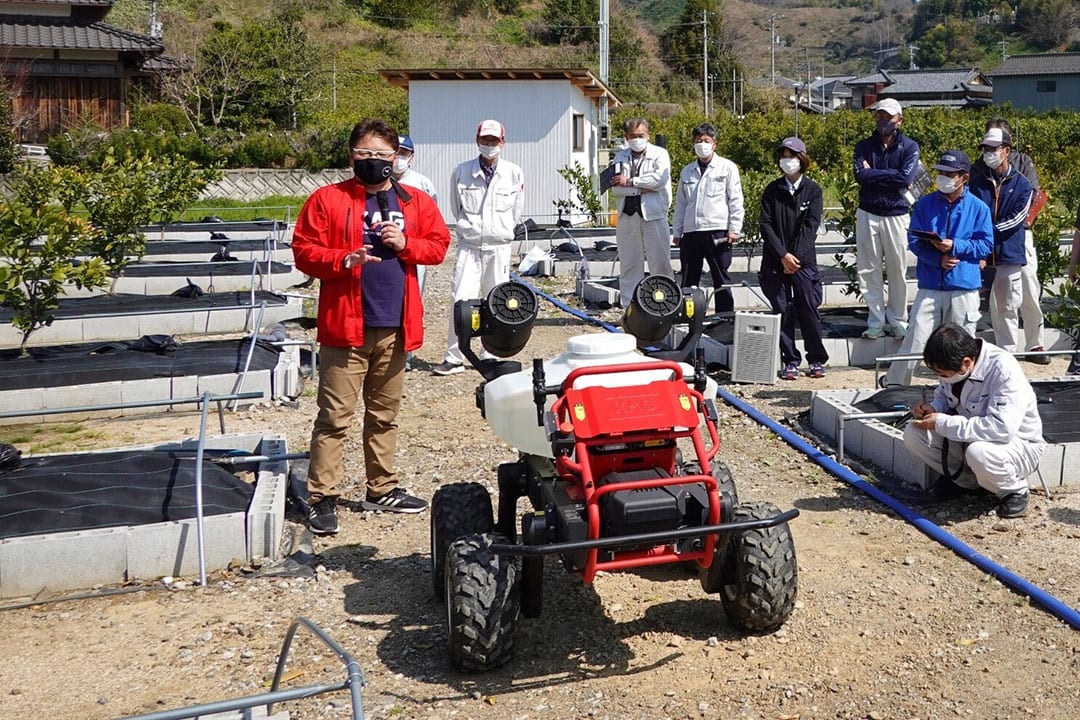XAG R150 field robot to alleviate labour shortage in Japan

XAG’s R150 field robot made its debut in Japan, pollinating an apple orchard in Takayama.
Japan is facing huge labour shortages in agriculture due to an aging population. Field robots could help alleviate these shortages. In 2020, the Japanese Ministry of Agriculture, Forestry and Fisheries developed a precision agriculture roadmap for the coming 10 years. Adopting digital technologies, field robots and artificial intelligence is to create new growth in Japan’s agricultural economy.
Absence of insect pollinators
Another problem is the declining number of bee swarms. The absence of insect pollinators could lead to a huge reduction in yield for fruit growers. This has led to experiments with field robots being used for pollination of fruit trees.
Last April, XAG Japan demonstrated the pollination of apple trees with its R150 using its on-board JetSprayer. During the demonstration, the operator poured a special mixed solution of pollen into the liquid tank of the XAG R150, which then started to move autonomously and spray liquid pollen on the Sun Fuji apples following the pre-set route. From a distance, the operator could adjust the spray angle and spread width using a smartphone app.
Text continues underneath video
Less inputs
One row of apple trees was pollinated within 10 minutes, 12 times faster than manual pollination, says XAG. Besides, less water and pollen was used because of the high level of precision with which the robot sprays.
XAG says with its R150 large-scale orchards can be sprayed within a short period of time, without growers having to worry about hiring enough workers.
Text continues underneath image

According to Makoto Arai, a Japanese fruit grower in Takayama, field robots would be a great asset to his operation. “With a field robot, I don’t have to invest so much time in manual labour. Instead, I can focus on sales, branding and expanding my business.”
Also read: Precision farming to resurge Japanese agriculture
Join 17,000+ subscribers
Subscribe to our newsletter to stay updated about all the need-to-know content in the agricultural sector, two times a week.



